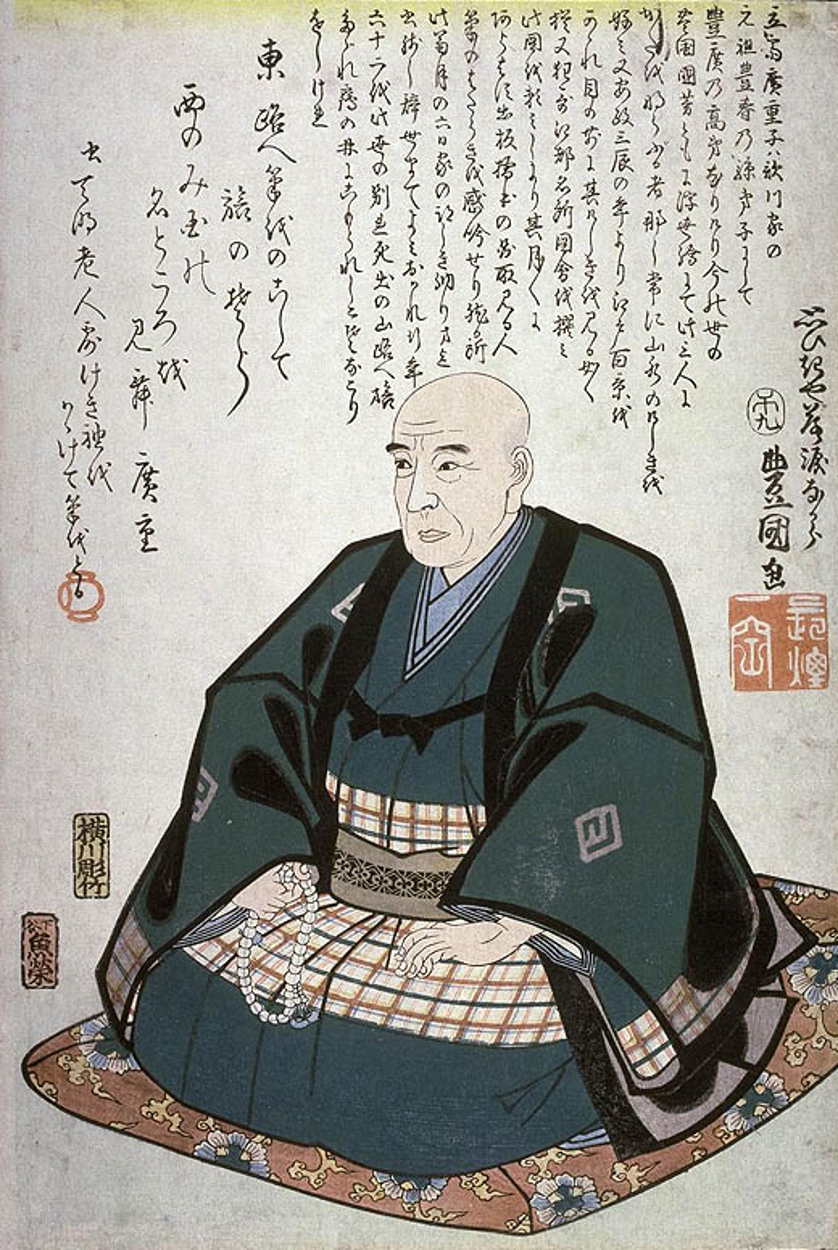The last major master of the ukiyo-e (“pictures of the floating world”) school, Hiroshige lived his entire life in the city of Edo (now Tokyo). In 1831, influenced by Hokusai, whose Thirty-Six Views of Mt. Fuji in 1823 introduced the commercial landscape print for a mass audience, Hiroshige began the first of his series of lyrical, dramatic landscape prints that incorporated pictures of famous places (meisho). These evoked the seasonal moods associated, by literary and artistic tradition, with different places during the Edo period (1600 to 1868).
One Hundred Famous Views of Edo, composed of 119 landscape and genre woodcuts of mid-19th-century Edo, is an ambitious single-sheet series that exhibits the artistic vision and craftsmanship that epitomize the inventiveness of the ukiyo-e color woodcut and the cooperatively employed talents of designer, carver, printer, and publisher.
The four colorful strips of cloth in the foreground of this print are not celebratory banners but bolts of cloth that dyers have hung out to dry. Hiroshige emphasizes the cloth's materiality by embossing a textured weave pattern on the surface of the white bolt. In the distance stands one of the many fire-watch towers scattered throughout the city. The buildings below were largely devoted to lodging visitors to Edo, maintaining the long-established function of this site as a point of entry and departure for travelers to and from the north.
If you love Japanese art as much as we do, please check our Japanese Art 50 Postcard Set!
P.S. Check out how Hiroshige's work inspired the art of one and only Vincent van Gogh!


 Hiroshige
Hiroshige